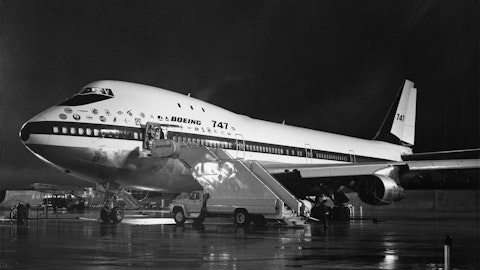AT&T’s bid to acquire Time Warner, a content company, is further recognition that evolving consumer preferences could pose a legitimate threat to core pay TV markets over the next decade (remember that AT&T has the world’s largest pay TV subscriber base).
In theory, as the number of consumption outlets (e.g. online streaming services) for content increases, the more valuable it becomes. AT&T is betting on the continued convergence of the media and communications industries.
Here’s what AT&T’s CEO Randall Stephenson said about the deal:
“Premium content always wins. It has been true on the big screen, the TV screen and now it’s proving true on the mobile screen. We’ll have the world’s best premium content with the networks to deliver it to every screen. A big customer pain point is paying for content once but not being able to access it on any device, anywhere. Our goal is to solve that. We intend to give customers unmatched choice, quality, value and experiences that will define the future of media and communications.
With great content, you can build truly differentiated video services, whether it’s traditional TV, OTT or mobile. Our TV, mobile and broadband distribution and direct customer relationships provide unique insights from which we can offer addressable advertising and better tailor content. It’s an integrated approach and we believe it’s the model that wins over time.”
Over 100 million customers subscribe to AT&T’s TV, mobile, and broadband services, which allows the company to offer bundled subscription packages that can hopefully be even further differentiated with the increased content flexibility provided by Time Warner.
AT&T Inc. (NYSE:T) expects $1 billion in annual cost synergies to be achieved within three years of the deal closing. Corporate and procurement expenses will be the main source of savings. Revenue synergies (e.g. bundled sales; new advertising options; launch of streaming services) are also anticipated but are not quantifiable at this time.
Essentially, AT&T hopes to become a stronger alternative to pure-play cable TV providers with Time Warner under its wings. In my opinion, AT&T primarily chased this deal because of the growth challenges it is facing in its legacy wireless and video businesses.
Regardless, this is a bold move that will impact AT&T’s long-term fate for better or worse. It could redefine the future playbook for traditional cable companies (i.e. vertically integrate with content creators for more control over content costs and distribution), or it could reveal the challenges of trying to do two very different things well at once (i.e. produce great content and maintain relevant distribution networks).
Comcast’s acquisition of NBCUniversal in 2011 remains controversial, and it will likely take a number of years to see if these content chess moves pay off in the fast-changing media world.
Let’s take a look at the potential impact of AT&T’s acquisition of Time Warner Inc (NYSE:TWX) on the company’s dividend safety and growth.
How AT&T’s Time Warner Acquisition will Impact the Dividend
Using our Dividend Safety Scores, AT&T’s dividend ranked among the safest in the market prior to the Time Warner acquisition announcement.
AT&T’s non-discretionary services, excellent free cash flow generation, and reasonable free cash flow payout ratio (67% over the trailing 12 months) all supported the company’s ability to continue paying down its high debt load while continuing to make dividend payments.
Time Warner also scored well for Dividend Safety. The company’s free cash flow payout ratio (35%) is even lower than AT&T’s, and the business is also a free cash flow machine.
The biggest risk of combining the two companies, in my view, is AT&T’s increased debt burden. The company’s total debt could further balloon from $120 billion to $170 billion, and AT&T’s credit rating from S&P was the third-lowest investment grade prior to the deal.
Adding more debt raises AT&T’s annual interest expense, could result in a credit rating downgrade (raising its cost of capital), increases refinancing risk, and leaves less margin for error if industry conditions change faster than expected.
Here’s what Moody’s noted:
“The deal’s financing costs will consume the majority of acquired free cash flow due to an incremental $2.3 billion in annual dividends and $1.3 billion in additional after-tax annual interest expense.
Moody’s believes that given AT&T’s limited excess cash after dividends and modest EBITDA growth potential, that organic leverage reduction is limited to around 0.1x to 0.2x annually….
AT&T’s funded debt balance could exceed $170 billion following the transaction close and average annual maturities will be greater than $9 billion starting in 2018…This may cause AT&T’s cost of debt to rise, especially in times of market stress. Rising benchmark rates, combined with wider credit spreads would put pressure on AT&T’s free cash flow.”
Follow Warner Media Llc (NYSE:TWX)
Follow Warner Media Llc (NYSE:TWX)





